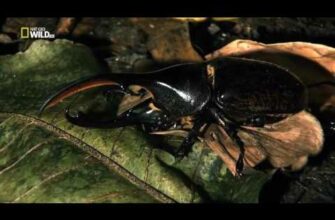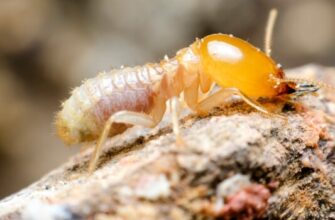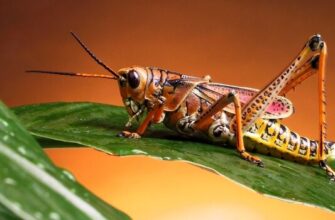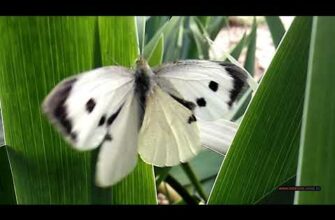The woodcutter beetle is a striking representative of the Coleoptera order, famous for its huge mustache. Due to its external features, it is often also called a mustachioed. This insect mainly lives in tropical countries, but is represented on almost all continents. It has more than twenty-five thousand varieties. And this is not the final figure. Every year, scientists discover more and more new species of barbel.
Origin of the species and description
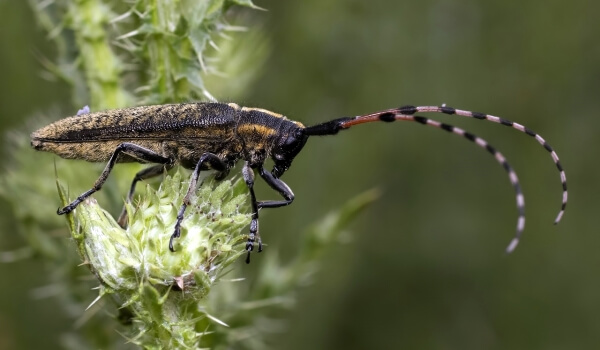
Photo: Woodcutter Beetle
Lumberjacks are a very numerous family of beetles. They belong to the order Coleoptera and occupy the fifth place in terms of the number of species. As already noted, today scientists have more than twenty-five thousand varieties. Beetles got their name “lumberjacks” due to their special “love” for the tree. They not only eat wood, but also build their houses in it.
Interesting fact: the titan lumberjack is recognized as the largest beetle in the world. The length of his body can reach twenty-two centimeters. However, such a huge insect cannot be found in museums. Individuals presented for public viewing have a length of no more than seventeen centimeters.
Due to the fact that wood is used by these beetles for food, they are considered pests. These insects cause enormous damage to human property, various buildings, and the environment. This many-sided creature is distributed almost all over the globe. The only exceptions are the very cold regions of the planet Earth. The largest population is observed in tropical regions.
Their whiskers are considered a unique feature of these animals. They are segmented, most often several times the length of the body itself. Wings are also a feature. However, not all members of the family can use them. Only a few species are endowed with the ability to fly. Large lumberjack beetles often look very awkward when flying.
Appearance and Features
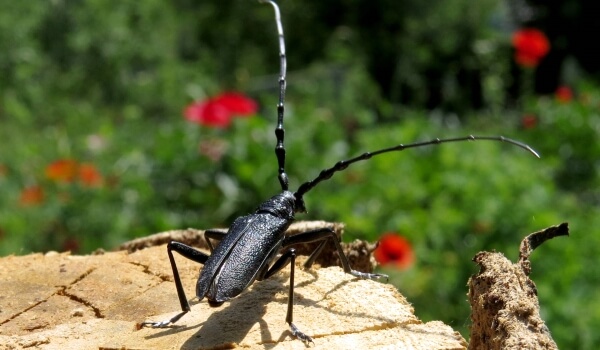
Photo: Lumberjack Insect
Most representatives of lumberjacks have an average body size. Only a small number belong to the group of giants – this is titanium, bigtooth. Their average length is 167 millimeters. These animals live mainly in South America. Beetles from Fiji have smaller dimensions. Their length can reach fifteen centimeters. The carpenter beetle (up to 6 centimeters) is a giant among European species, the relic barbel (up to 11 centimeters) is a large representative of the detachment living in Russia.
Video: Lumberjack beetle
A significant part of the length of the insect is occupied by the mustache. Sometimes they exceed the length of the body by four to five times. The body of the lumberjack beetle is slender, slightly elongated. It may have various spots, stripes.
Colors can be varied:
- gray-blue;
- black brown;
- greenish;
- white;
- pearl;
- pale yellow.
Interesting fact: Atypical species of woodcutter beetle are found among adult woodcutter beetles. One of them is the barbeled parandra. It has small dimensions, is considered the most primitive. The body of such an insect is flat, very wide. For this reason, it is often confused with the stag.
Lumberjacks can make various sounds. The sound is produced as a result of friction of the rib against the surface of the mesothorax. The sound is creaking, not very pleasant. Beetles use it as a defense. The sound is made in case of an enemy attack, it has a frightening character.
Where does the lumberjack beetle live?
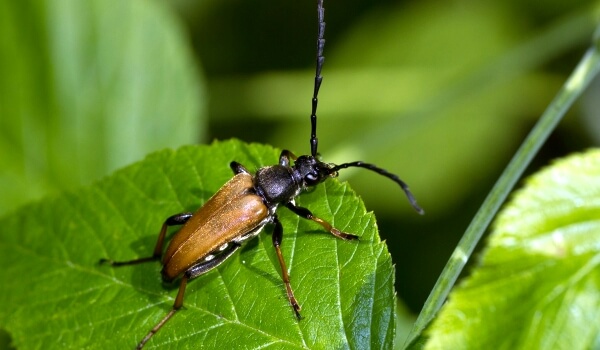
Photo: Relic Lumberjack Beetle
The longhorn beetle can thrive just about anywhere there is wood. The only exceptions are regions with too low temperatures. The favorite tree species of such insects are conifers. However, they also live in other trees, shrubs, and even herbaceous plants. Sometimes insects choose country houses and summer cottages for living. They can eat wooden furniture, building elements, which do great harm.
The largest representative of the family, the titan beetle lives in Colombia, Peru, Ecuador, Venezuela. They live in the Amazon basin. Residents of these countries sometimes independently attract such insects to their homes, then sell them for huge sums. Demand for titan beetles is very high among collectors.
In European countries, in Iran, Turkey, Western Asia, in the Caucasus and the Urals, large populations of tanner beetles live. They also live in Moscow. For life, animals choose deciduous, mixed forests. They nest in dead trees. In general, about five hundred species of longhorn beetles live in Russia. Other varieties of the woodcutter beetle are represented on almost all continents. They live in Poland, Belarus, Ukraine, Moldova.
What does the woodcutter beetle eat?
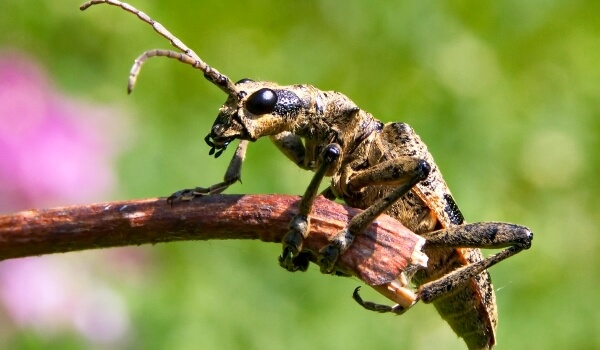
Photo: Large Lumberjack Beetle
Basic Diet lumberjack beetles are made up of leaves, pollen, needles. Some representatives of the genus prefer to eat only juice. The bark on young twigs is less likely to become food. It is eaten by middle-aged individuals. The bark of young twigs is a “dietary” food. It helps germ cells to mature.
The black house woodcutter brings great harm to mankind. It inhabits building materials, furniture, wooden elements of residential and commercial buildings. Such beetles not only make cracks for themselves to live there, but also lay their larvae in them. There have been cases in the world when barbel larvae almost completely destroyed wooden houses in entire neighborhoods.
The larvae feed mainly on dead wood. This is due to the fact that a living tree has too little protein. Protein is essential for larvae to grow and develop. In rotting trees where fungi have developed, there is much more of this necessary protein.
Interesting fact: There are adult lumberjack beetles in the world that do not eat at all.
An example of the insects doing without food, the beetle titan can become. He lives off those nutrients that he was able to accumulate even in the larval stage. The beetles tolerate the period of fasting absolutely normally. And the entire adult period does not last long – only a couple of weeks.
Character and lifestyle features
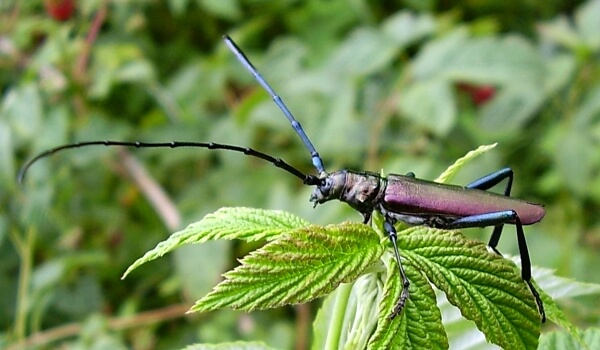
Photo: Woodcutter Beetle Red Book
Lifestyle, the rhythm of life depends on a number of factors:
- place of residence;
- climate, weather conditions in the region;
- food quality;
- gender.
Adult bugs living in the southern regions begin to show activity from mid-spring. The lumberjack beetle flies in the Central Asian territory only at the beginning of autumn. Rare representatives of the family, feeding on flowers, lead a daily lifestyle. Other species prefer to fly, breed and feed at night.
Most adult longhorn beetles spend their time in hiding during the day. There they rest and eat. Such insects fly extremely rarely. This is due to the large dimensions of the body. It is difficult for such bugs to take off and land softly. Only some of the flying species can make a long flight. At the same time, in some species, females fly more, in others – males.
The lumberjack beetle is an insect with a frightening appearance. However, it does not bring almost any physical damage to a person. The barbel does not bite unnecessarily, has a calm character. History knows only a tiny number of such incidents. And the bite itself is not dangerous to humans. It heals quickly.
Social structure and reproduction
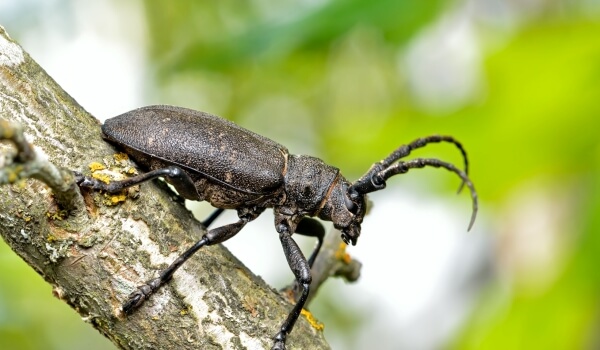
Photo: Lumberjack beetle
Female lumberjacks lay their eggs in spring. For breeding, they very carefully select a secluded place. This is due to the fact that the place will serve not only as a “roof” over the head, but also as a source of food for the larvae. Most often, eggs are laid in large cracks in the tree. Females prefer conifers: pine, cedar, barely. Insects determine the type of tree by its delicate aroma.
Barbeled females can lay different numbers of eggs. Sometimes their number reaches several hundred pieces at a time. Two weeks after laying, larvae begin to appear. They have a white color, clumsy appearance. Barbel larvae resemble worms, they are highly gluttonous.
Interesting fact: The lumberjack beetle often interbreeds with other species. This leads to the formation of a large number of hybrids.
Lumberjack beetle larvae have strong, powerful jaws and a high survival rate. They not only live in wood, but also actively make moves there to look for a new source of food. The appetite of the larvae is monstrous. With a large accumulation, they are able to completely destroy a wooden structure in a short period of time.
The larvae of lumberjack beetles live for more than one year. It takes a long time to grow up. For some it is one year, and for some species it is about two years. Adults live for a meager amount of time – no more than twenty-five days.
Lumberjack beetle natural enemies
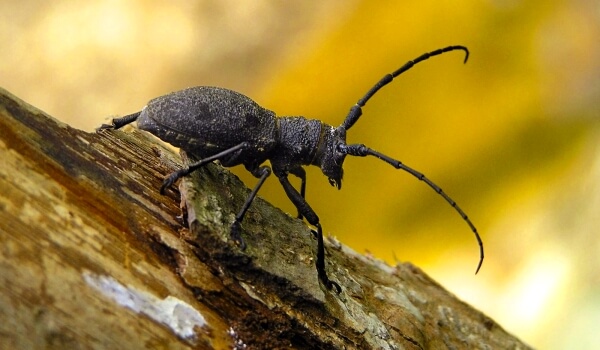
Photo: Lumberjack Longhorn Beetle
The most dangerous natural enemies of adult lumberjack beetles are woodpeckers. It is they who most often attack insects. They are also preyed upon by other species of birds. Often, barbel beetles become victims of predatory insects. Rarely, they are attacked by parasitic microorganisms. The latter kill animals slowly but surely.
The larvae live in secluded places, so they are less likely to fall prey to natural enemies. They are preyed upon by wasps, parasitic microorganisms, and other varieties of beetles.
Adult lumberjacks do not suffer as much from predators and birds as from human hands. Rare varieties of barbels, especially large individuals, are in particular danger. In most countries, they are hunted by collectors, lovers of the exotic. They catch them for their collections or for sale. In America, for example, you can get about a thousand dollars for a lumberjack beetle.
Population and species status
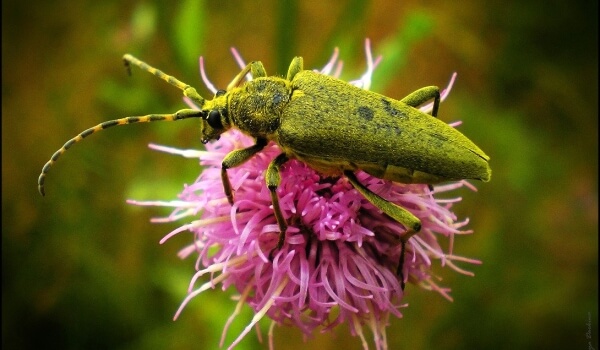
Photo: Woodcutter Beetle from the Red Book
The lumberjack beetle has about twenty-five thousand species. For this reason, the family cannot be called endangered. The population of such insects in the main area of u200bu200bresidence is quite large, nothing threatens it. However, many varieties of longhorn beetles are rapidly declining. Some species are even listed in the Red Books of European countries.
The following factors influence the decline in the population of certain varieties of lumberjacks:
- massive felling of coniferous forests. Coniferous woods are increasingly being used during construction and furniture manufacturing. Uncontrolled logging leads to the destruction of the “houses” of lumberjacks;
- trapping of beetles by collectors. This is due to the high cost of individuals on the market;
- destruction of insects by humans. The woodcutter beetle, especially its larvae, is a pest. Those individuals that settle in houses, in summer cottages, are periodically exterminated with the help of special compounds.
Protection of lumberjack beetles
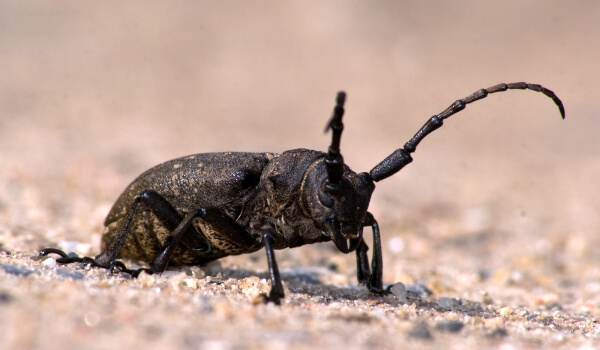
Photo: Lumberjack Beetle
Today, the number of mustachioed carpenters is rapidly declining. This insect is listed in the Red Book in Poland, Czechoslovakia, Hungary and the Red Book of the Krasnodar Territory in Russia. Oak barbel is listed in the Red Book of Ukraine. In Russia, the number of relic lumberjacks is also rapidly declining. It, together with the alpine barbel, is listed in the Red Book of Russia.
The rapid reduction of the above species of the Coleoptera order leads to the need to introduce conservation measures. So, in Hungary, the collection of barbels is strictly prohibited, punishable by law. In some regions, the government is introducing measures to limit the economic development of areas where woodcutters live.
The woodcutter beetle is one of the most beautiful representatives of the beetle family. This is a large beetle with an outstanding appearance, the highlight of which is a large mustache. Every year, scientists find more and more new varieties of lumberjacks, so the overall population of these insects is at a fairly high level. However, certain types of barbel are rapidly declining in number, which requires people to take certain protective measures.

